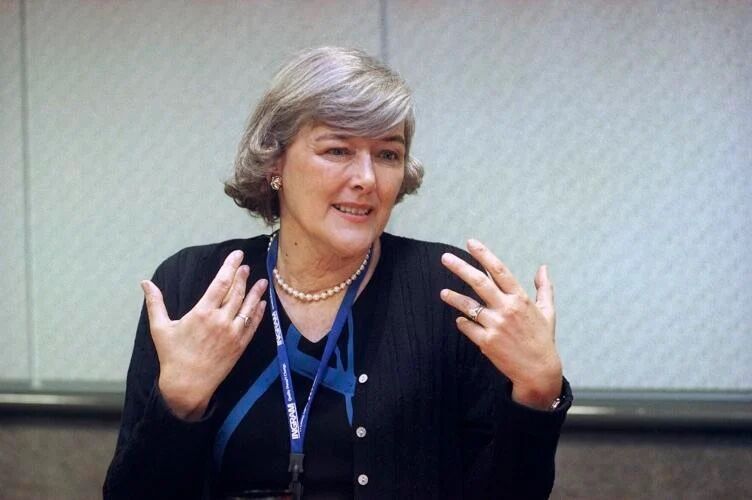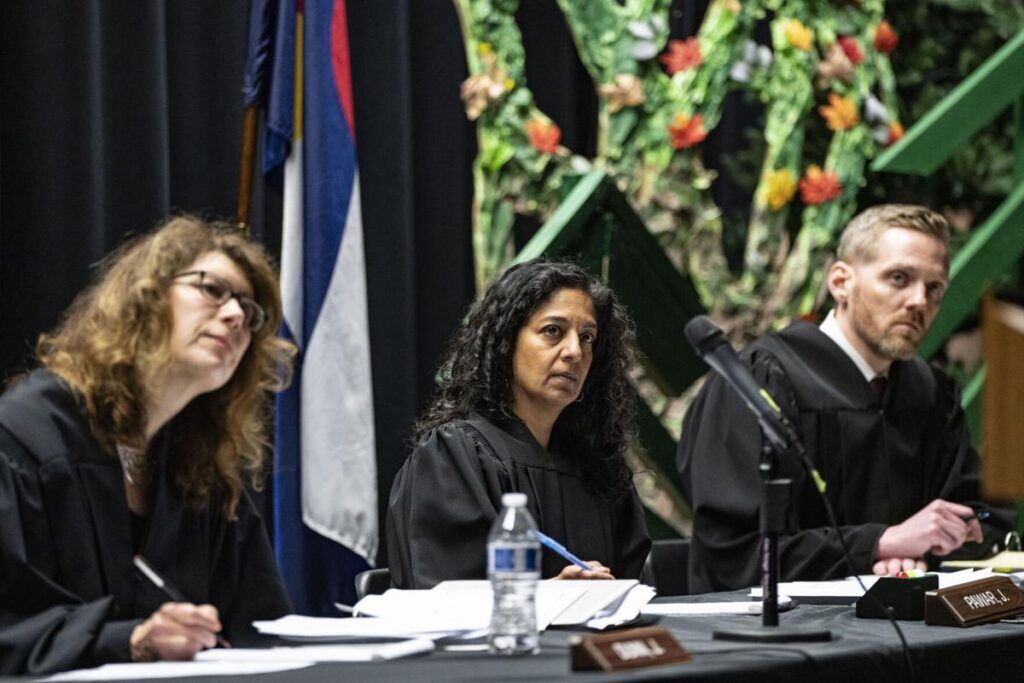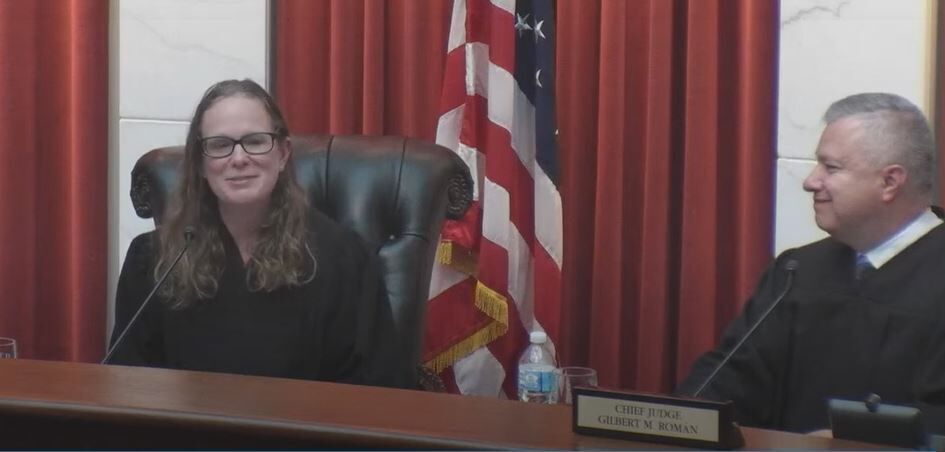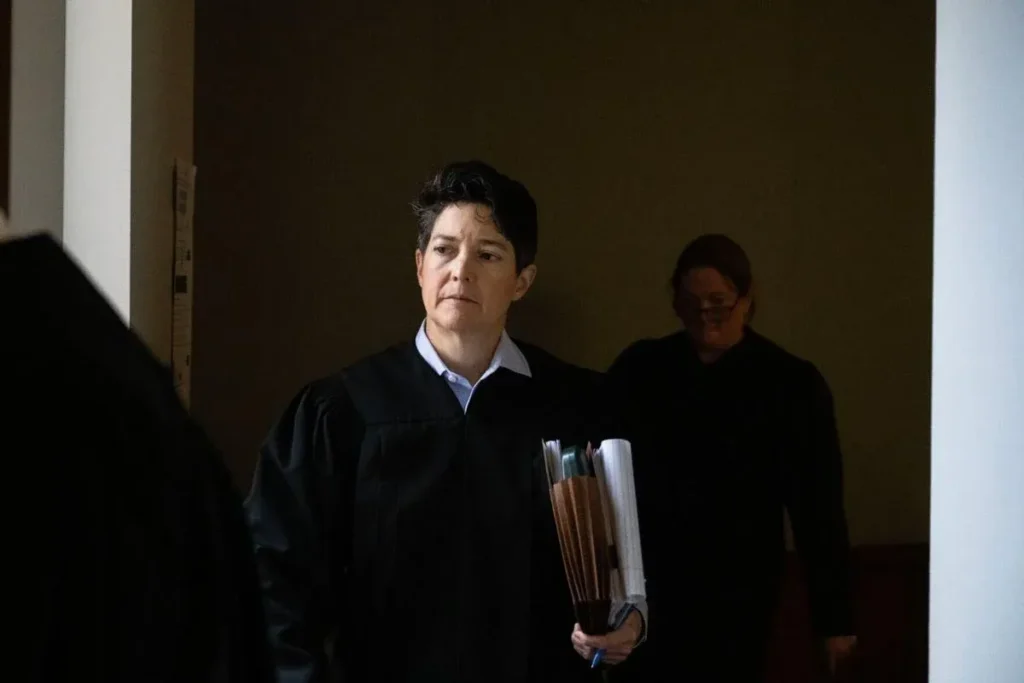U.S. Sen. Michael Bennet thrilled with energy-efficient homes at Solar Decathlon
After touring the Solar Decathlon site and speaking with a couple hundred middle school students about the impact the technology on display could have on the economy, U.S. Sen. Michael Bennet said he was thrilled the U.S. Department of Energy had chosen Colorado for this year’s installation.
“It’s another recognition of Colorado’s leadership to have this – we’re delighted to have it here,” Bennet said last Friday on the deck of the RISE house – it stands for Residential, Innovative, Stackable and Efficient – designed by a team of current and former University of California Berkeley and University of Denver students.
“One of the amazing things that’s happened over the last 10 years is the prices of solar panels has fallen like this” – Bennet indicated a steep downward slope with his hand – “and the price of storage has not fallen so fast, though it is falling. It makes solar installations like this much more cost-effective and more affordable, and therefore much more practical. I think over the next decade we’re going to see installations all over the state of Colorado.”
Eleven collegiate teams built full-size, solar-powered houses as part of the international, biennial competition – a temporary city that sprung up for two weeks adjacent to RTD’s 61st and Peña Station on the plains near Denver International Airport.
“The Solar Decathlon inspires and challenges college students to think creatively about energy innovation for the future through design,” Deputy Energy Secretary Dan Brouillette at the competition’s kick-off. “Students are actively addressing global energy challenges such as reliability, resiliency, and security by incorporating the use of innovative energy and water efficiency technologies into their professional projects.”
The UC Berkeley-DU team took third place in the over-all competition, event organizers announced Saturday, behind the Swiss and University of Maryland teams. The houses were judged in 10 categories, including architecture, engineering, energy efficiency and market potential.
Bennet said the homes at the Solar Decathlon demonstrate the importance of legislation he’s sponsored to encourage energy-efficient construction and renovation – including the bipartisan SAVE Act, which would factor a home’s energy cost savings when underwriting federally backed mortgages.
“It’s a great illustration about why it’s very important to align incentives in a way that produces these kind of results,” he said. “The reason I’m interested in that is partly to reduce the use of carbon and partly to incentivize energy savings, but it’s also, at its core, about producing American jobs that can’t be exported overseas. Forty percent of the greenhouse gases that we have are caused by the built environment. Retro-fitting buildings brings our energy uses down, cleans our environment, but also – very importantly – produces jobs that can’t be exported. We should be doing it all over America right now.”
The RISE house, designed for Richmond, California, as the city transitions from sprawling suburb to denser neighborhoods, is designed to stack up to three units high – ideal for what team leader Sam Durkin, a Berkeley graduate, described as urban infill on narrow lots. Its solar panels and Tesla Powerwall battery, as well as built-in graywater recycling and a moss-covered north-facing wall, mean the house can achieve net-zero energy consumption and operate entirely off the grid, day or night, Durkin said.
“Getting the house here is winning, and now being able to teach people about the different things we came up with over the last two-and-a-half years – that’s the fun part,” he said. One of those things, he said with a big grin, is the moveable wall system inside the house, which the design team had just demonstrated for Bennet.
“The interior bedroom walls are on tracks and can move all the way to the exterior walls, making our living space three times as large for dinner parties, events, things like that,” Durkin said. The feature didn’t add much to the demonstration house’s cost of about $200,000 – the framed wood walls glide on pocket-door tracks – although over-engineering the structure to be able to stack the house on top of ones just like it did add to the cost, he noted.
After the Solar Decathlon wraps up, Denver Habitat for Humanity plans to move the RISE home to a permanent lot in the metro area and sell it to a family.











